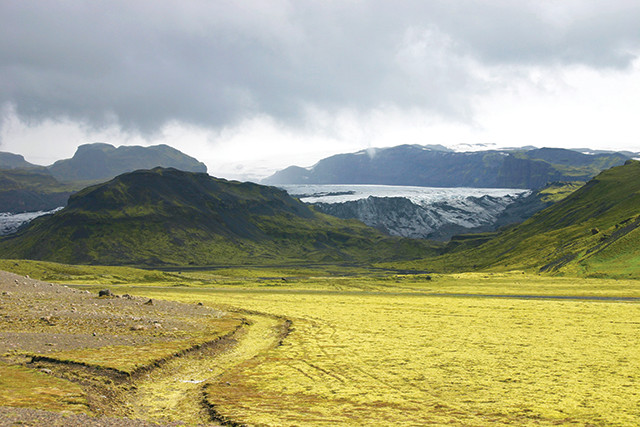
by Mary Caperton Morton Tuesday, March 29, 2016

The largest known jökulhlaups are issued by eruptions of Katla Volcano, which lies under the Mýrdalsjökull Ice Cap. The flow rates of Katla's glacial outburst floods can exceed those of the Amazon River. Credit: Malcom Browne, CC BY-SA 2.0.
Katla Volcano is located near the southern tip of Iceland, under the Mýrdalsjökull Ice Cap. Ashfall deposits found as far away as Norway and Denmark indicate that Katla erupted at least 20 times between A.D. 930 and the last eruption in 1918. Its present dormancy is the longest-known quiet period in the volcano’s history.
“We’re always worried about Katla, and with good reason,” says John Stevenson, a volcanologist at the University of Edinburgh in Scotland. The high water marks left by catastrophic glacial flooding triggered by the 1918 eruption indicate a flow rate of more than 300,000 cubic meters per second. “That’s similar to the discharge rate of the Amazon River,” he says. The eruption in 934 produced one of the world’s largest-known lava flows and the volcano has been one of the most prolific producers of explosive tephra over the last 12,000 years. Katla is thought to be the source of the Vedde Ash layer, a 10,600-year-old layer of tephra important in geochronography dating studies that has been found as far away as Scotland, Denmark and Norway.
Katla has been showing signs of seismic unrest since 1999. Even more worrisome is the volcano’s connection to the Eyjafjallajökull Volcano, which last erupted in 2010. Eruptions at Eyjafjallajökull in 920, 1612, 1821 and 1823 were followed by eruptions at Katla within a few months or years.
© 2008-2021. All rights reserved. Any copying, redistribution or retransmission of any of the contents of this service without the expressed written permission of the American Geosciences Institute is expressly prohibited. Click here for all copyright requests.